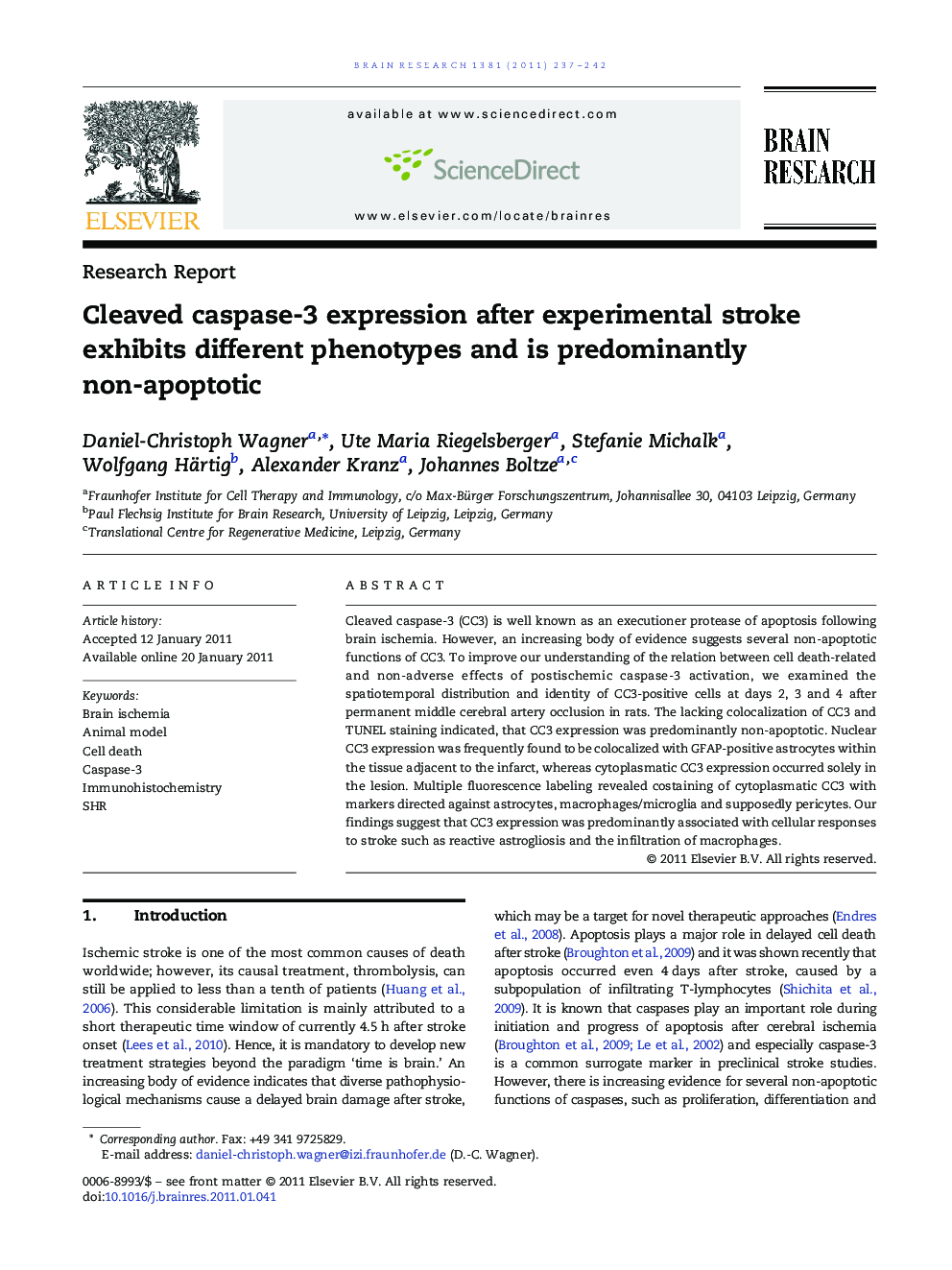| کد مقاله | کد نشریه | سال انتشار | مقاله انگلیسی | نسخه تمام متن |
|---|---|---|---|---|
| 6264940 | 1614058 | 2011 | 6 صفحه PDF | دانلود رایگان |

Cleaved caspase-3 (CC3) is well known as an executioner protease of apoptosis following brain ischemia. However, an increasing body of evidence suggests several non-apoptotic functions of CC3. To improve our understanding of the relation between cell death-related and non-adverse effects of postischemic caspase-3 activation, we examined the spatiotemporal distribution and identity of CC3-positive cells at days 2, 3 and 4 after permanent middle cerebral artery occlusion in rats. The lacking colocalization of CC3 and TUNEL staining indicated, that CC3 expression was predominantly non-apoptotic. Nuclear CC3 expression was frequently found to be colocalized with GFAP-positive astrocytes within the tissue adjacent to the infarct, whereas cytoplasmatic CC3 expression occurred solely in the lesion. Multiple fluorescence labeling revealed costaining of cytoplasmatic CC3 with markers directed against astrocytes, macrophages/microglia and supposedly pericytes. Our findings suggest that CC3 expression was predominantly associated with cellular responses to stroke such as reactive astrogliosis and the infiltration of macrophages.
Research Highlights⺠Cleaved caspase-3 expression increased from 48 h to 96 h after cerebral ischemia. ⺠Postischemic cleaved caspase-3 expression was rarely associated with TUNEL. ⺠Nuclear cleaved caspase-3 expression occurred in astrocytes adjacent to the lesion. ⺠Cytosolic caspase-3 activation was found in distinct cells within the necrotic lesion.
Journal: Brain Research - Volume 1381, 24 March 2011, Pages 237-242